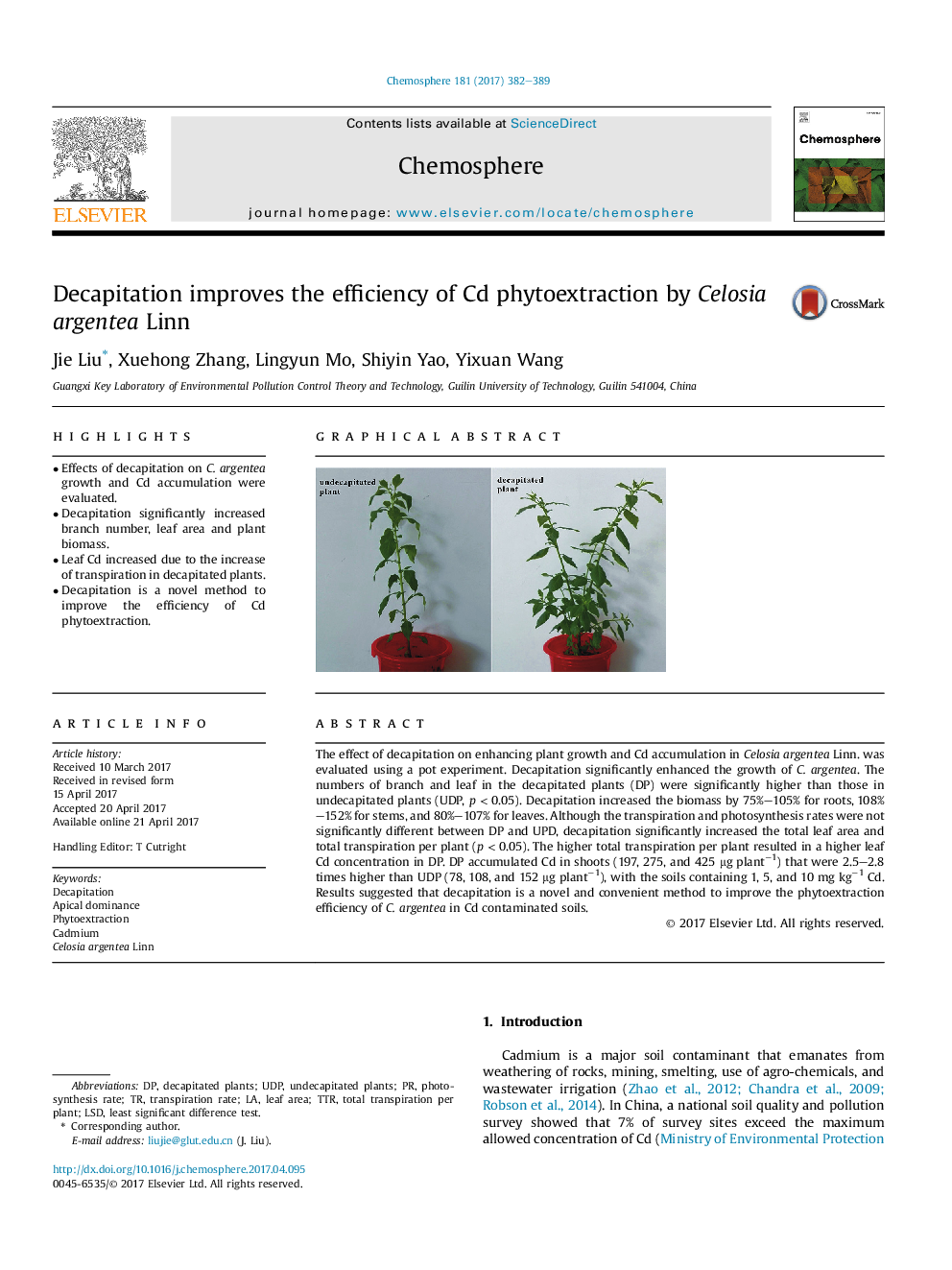| Article ID | Journal | Published Year | Pages | File Type |
|---|---|---|---|---|
| 5747196 | Chemosphere | 2017 | 8 Pages |
â¢Effects of decapitation on C. argentea growth and Cd accumulation were evaluated.â¢Decapitation significantly increased branch number, leaf area and plant biomass.â¢Leaf Cd increased due to the increase of transpiration in decapitated plants.â¢Decapitation is a novel method to improve the efficiency of Cd phytoextraction.
The effect of decapitation on enhancing plant growth and Cd accumulation in Celosia argentea Linn. was evaluated using a pot experiment. Decapitation significantly enhanced the growth of C. argentea. The numbers of branch and leaf in the decapitated plants (DP) were significantly higher than those in undecapitated plants (UDP, p < 0.05). Decapitation increased the biomass by 75%-105% for roots, 108%-152% for stems, and 80%-107% for leaves. Although the transpiration and photosynthesis rates were not significantly different between DP and UPD, decapitation significantly increased the total leaf area and total transpiration per plant (p < 0.05). The higher total transpiration per plant resulted in a higher leaf Cd concentration in DP. DP accumulated Cd in shoots (197, 275, and 425 μg plantâ1) that were 2.5-2.8 times higher than UDP (78, 108, and 152 μg plantâ1), with the soils containing 1, 5, and 10 mg kgâ1 Cd. Results suggested that decapitation is a novel and convenient method to improve the phytoextraction efficiency of C. argentea in Cd contaminated soils.
Graphical abstractDownload high-res image (222KB)Download full-size image
